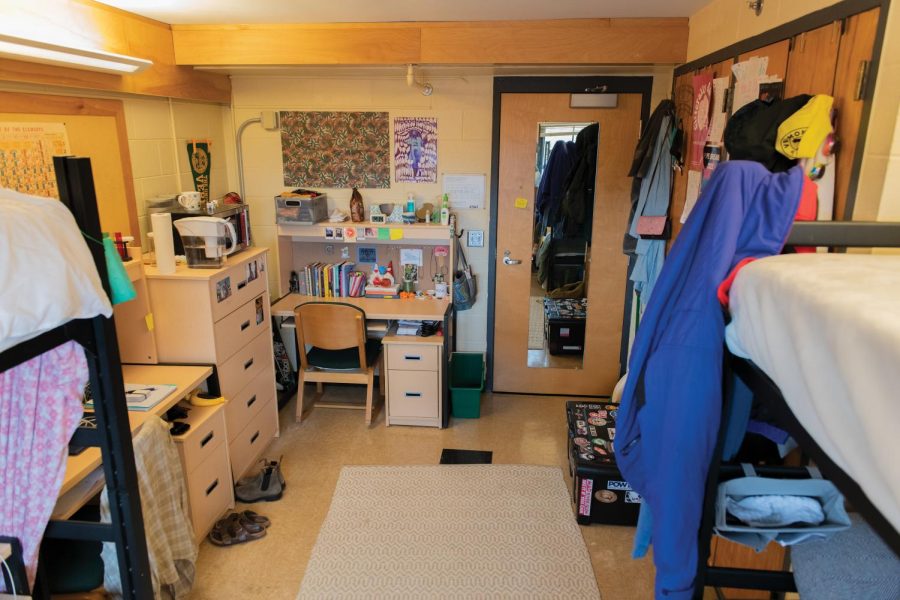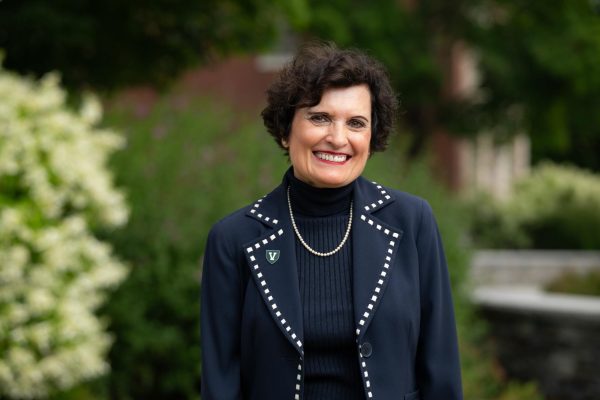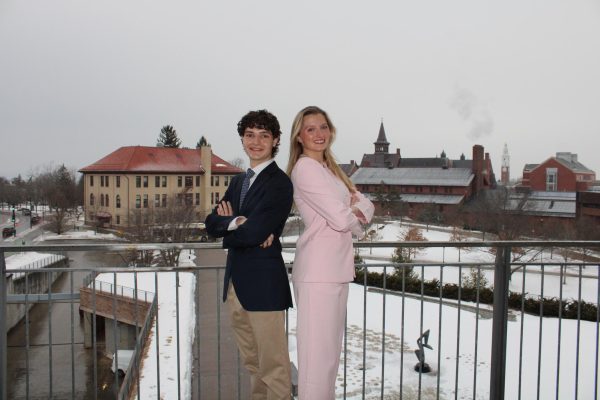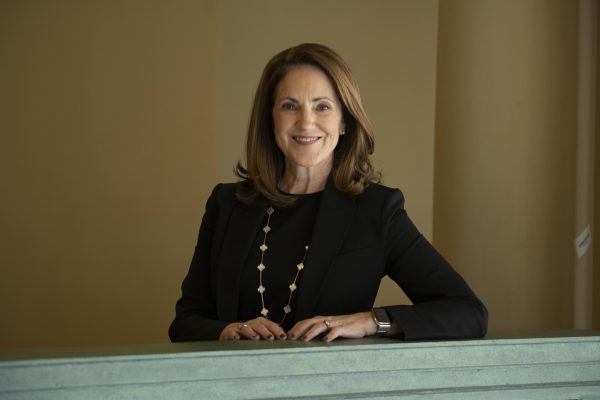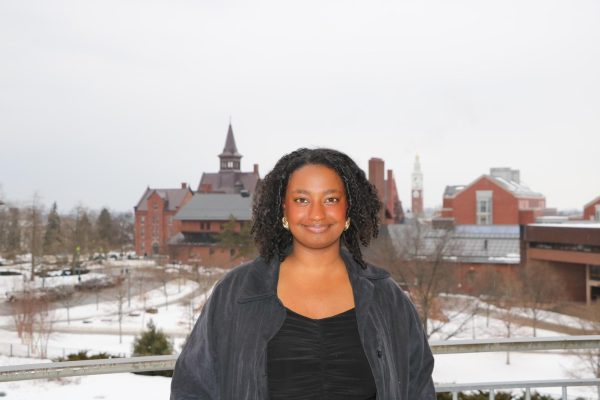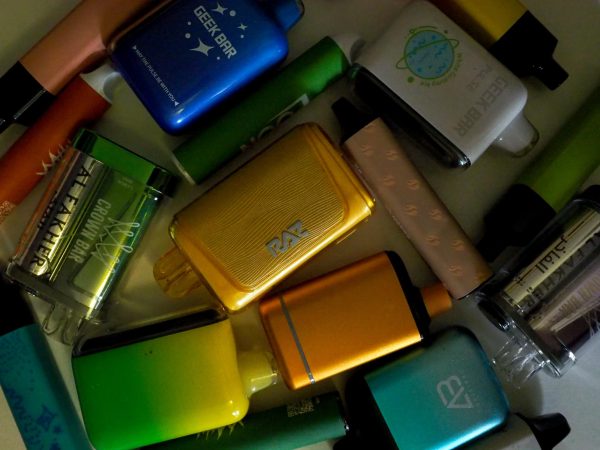UVM predicts uptick in dorm triples
A triple dorm in Davis Hall on Redstone campus.
Approximately 25% of on-campus UVM students live in triples, a percentage likely to increase in future years, said Kevin Hytten, interim director of Residential Life.
In fall 2019, the University had 469 triple rooms housing up to 1,407 students, Hytten stated in an April 1 email. Fall 2021 had 433 triple rooms for 1,299 students. ResLife expects fall 2022 to have similar numbers to fall 2019.
“We had a large first year class, we’re going to have a large first year class again,” Hytten said. “We have a lot of people on campus and can only house an appropriate number. […] The reality of our housing inventory is we will have triples.”
ResLife did not use triples in fall 2020 because of the pandemic-related lower numbers of students on campus, the email stated.
“By and large, there is no significant difference between students who are in triple rooms or double rooms,” Hytten said. “They are academically achieving in the same sort of ways. Their experiences are typically the same.”
However, students should not have to experience living in a triple, said first-year Lillie Tyroler, who lives in a forced triple in Davis Hall.
All triple rooms on campus are double occupancy rooms housing three people, according to the 2021-2022 ResLife Contract.
Students often refer to a room designed to house two people that was converted to house three people as a forced triple, Hytten said.
“Just because you can technically fit a third person, doesn’t mean that you should,” Tyroler said.
The triple is cramped and does not offer Tyroler a lot of personal space or time, she said.
“I just never go into my room,” Tyroler said. “I feel like I never have a space that’s my own. […] It’s just a place where I put my stuff and sleep in.”
Tyroler did not expect to live in a triple and didn’t know it was an option until she found out her housing details before moving in, she said.
The ResLife website features virtual room tours displaying a total of 15 double rooms from 11 residence halls and two triple rooms from Mason Hall and UHeights North.
“Here in Residential Life, we try very intentionally to not talk about forced triples,” Hytten said. “That is language I think students and parents have started to adopt.”
ResLife staff recently reassessed every room on campus to identify locations for potential triples, Hytten said.
The requirements for an effective triple rely on a fixture count, which is the ratio of students to bathroom facilities, Hytten said.
“We recognize some of our rooms are the size they are and have three people in them, and some of them are the size they are and have two people,” Hytten said. “We’ve identified one room as a triple and one room as a double, and we sell it as such.”
A private triple is a double occupancy room for three people with a shared full bath,. It costs $8,058 for one year, the contract states. These are located in UHeights North and South.
A suite triple is a double occupancy room for three people with four to seven people sharing one to two full baths. It costs $7,664 for the year, according to the contract. These are located in University Heights North and South as well as the Trinity Campus Back Five.
A traditional triple is a double occupancy room for three people with a common hallway bath. It costs $6,934 for the year and is located in all halls except UHeights North and South, Living/Learning, Central Campus Residence Hall and the Trinity Campus Back Five.
Sophomore Jack Pitblado chose to live in a triple in Ready Hall this year because of its financial benefits.
“We save a good amount of money living in that living arrangement, [which] is preferable to paying to live in a single or something,” Pitblado said.
Still, Pitblado wishes triple rooms were larger than double rooms to accommodate the extra person they house, he said.
“It’s not fun to have the same size room as the people living next door [in a double] and they have more walkable space,” Pitblado said.
However, Pitblado likes having two roommates since they are his friends and enjoys living with them, he said.
“I would say I’ve had a good experience living at UVM, but living in a forced triple has definitely been annoying at times,” Pitblado said.
First-year Kiely Hills, who also lives in a forced triple in Davis Hall, thinks her living situation is unfortunate but overall positive.
“It can have negative aspects,” Hills said. “But I don’t know if I would change it if I could go back.”
When Hills learned she would be living in a triple, she expected the room to be larger than a double and felt disappointed when it was not, she said.
However, Hills is close with her roommates and enjoys living with them, she said.
“It’s a really fun dynamic to have three people, if you take away the [lack of] space,” Hill said.
In the future, ResLife wants to implement incentives for more returning students to opt into living in triples, Hytten said.
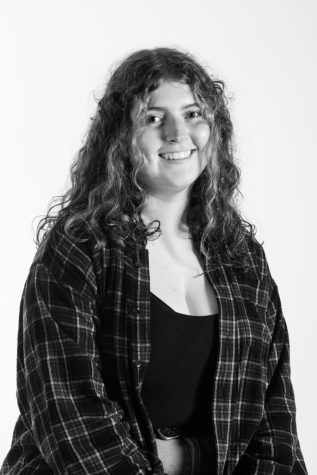
(She/they) Halsey McLaen is a junior from Groton, Connecticut, majoring in environmental sciences with a minor in reporting and documentary storytelling....


